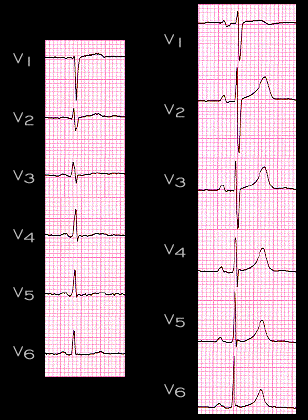
The chest leads from the other two patients whose frontal plane leads were shown earlier (pages 2.1.7 and 2.1.9) are shown here. They also demonstrate the characteristics of the normal P wave. The P wave is of lower amplitude in the ECG on the left than on the right, but in both, the biphasic nature of the P wave is seen in leads V1 and V2 and the progressive positivity is noted in leads V3 to V6.
